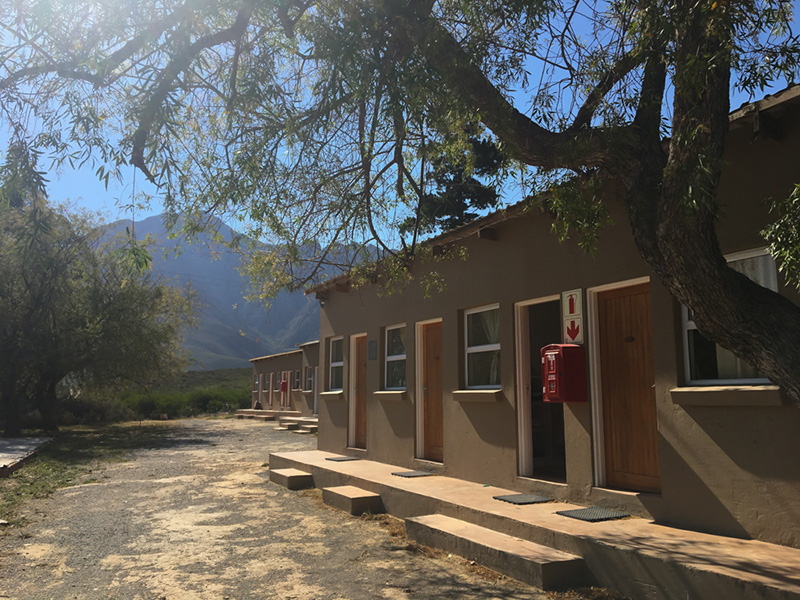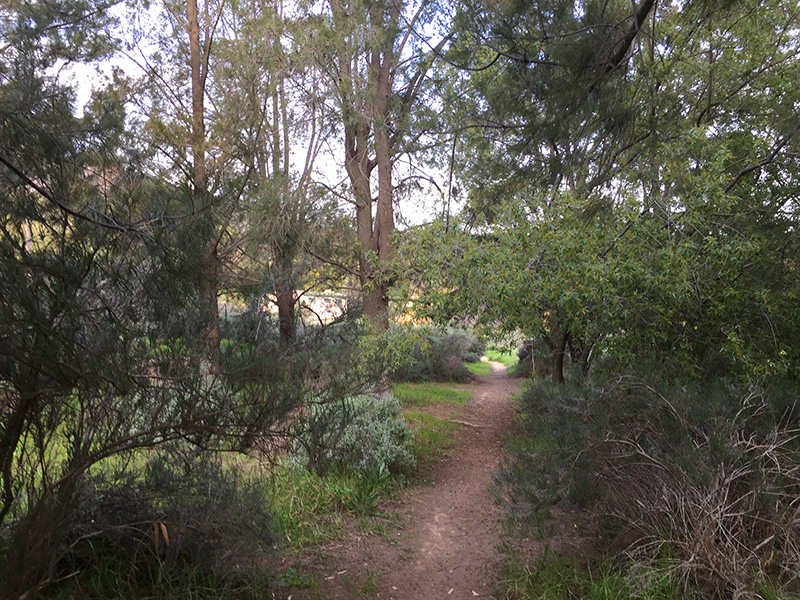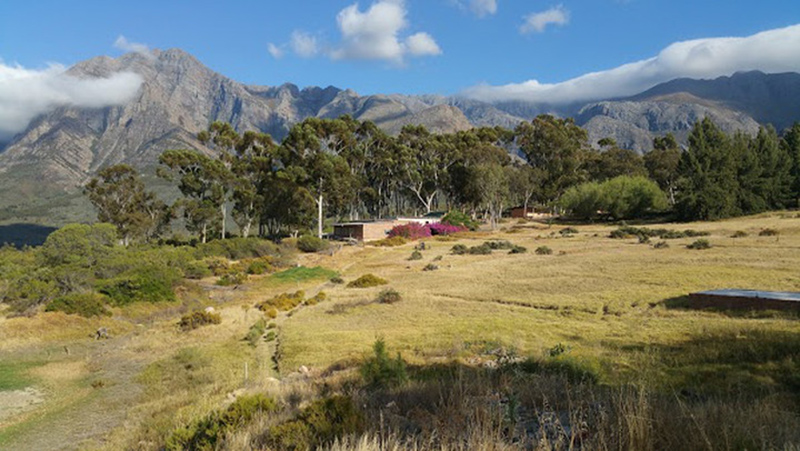Recently, I attended a ten-day silent Vipassana meditation retreat – ten days without technology, speaking, reading, writing, listening to music, exercising, or communicating in any way. Oh, and of course, close to 11 hours of meditating a day. I really didn’t think I’d make it- I wanted to leave on the 2nd day, the 3rd day, the 6th day and probably would’ve if I had my own transport or a place to go. My wife Nik and
myself stuck it out, deliberately stepping into the dark recesses of our subconscious mind day after day. It was by far, the hardest and most excruciating task I’ve ever undertaken but at the same time, the most profound and life-changing. This was my experience.
I signed up for the Vipassana retreat because I felt tired. Tired of being at the receiving end of a wild mind that for most of my life, has led me down numerous dark alleys- depression, drug addiction, anxiety, alcohol abuse. Unlike other meditation practices, Vipassana seemed to be about equanimity, discipline and hard work – right up my alley. I am not the most woo woo of humans, and the idea of a giant drum circle of positive thinkers made me want to run away screaming!
Vipassana is different from mindfulness meditation, which focuses on awareness, or transcendental meditation, which uses a mantra. Instead, it dictates a blanket command of non-reaction. No matter the pain as you sit, or the fact that your hands and legs fall asleep and that your brain is crying for release. You are instructed to refocus attention on the objective sensations in your body, arising and falling, as you do a scan of your limbs in a specific order. By doing so, over 10 days, you train yourself to stop reacting to the vicissitudes of life.

Day 0: Arriving at the Center and Meeting My Fellow Meditators
For day 0, participants were told to arrive for check-in between 2pm and 5pm before a dinner would be served at 6pm.
Nik and I met our first
I was positively surprised and we hit it off right away. He was about my age, an entrepreneur, an avid reader, and an overall cool dude.
Even better, he had very little previous experience with meditation and was simply there because a friend had recommended it to him. “Phew,” I thought, “there’s no way this guy is better prepared than I am. What a relief! I won’t be the only one struggling.”
Upon arrival at the
At dinner, I met even more people and continued to be impressed at how successful, down-to-earth, open, and non-woo-woo most of them were. Many of them were self-employed, business owners, entrepreneurs, students, or retired and they were from all over the world- Germany, France, America and Russia. To my relief, most of them weren’t very well prepared at all. They hadn’t read countless books on the topic, visited India, or meditated for years. For most people, it was their first retreat and some, their first encounter with meditation.
These first meetings with my co-meditators really quenched my nerves and boosted my optimism for the coming ten days. These were normal people just like me. They had no idea what to expect either. And they were just as excited/anxious as I was.
Once dinner was over, the noble silence started. We got some general info from the course managers in the dining room before heading to the dhamma hall for the first time. We were assigned our meditation spot and got our first instructions from our teacher, S N Goenka, through an audiotape.
The instructions were about an hour long, where we were told about some of the basics of the technique along with some of its history and some instructions for the meditation itself.
It was during that time that I realized for the first time just how hard this was going to get. After sitting for about 10-15 minutes, I already started experiencing lots of pain and discomfort. All I had to do was listen to an audio recording for a little under an hour and already I was struggling- a taste of things to come.
Once this torture introduction was over, it was time to go to bed. Thankfully, sleep never was an issue during the retreat. I was able to fall asleep fairly quickly and sleep through most of the night.

Day 1: Let the Struggle Begin
At 4 a.m. a gong went off multiple times and jolted me out of sleep. I felt like storming out, grabbing that damn gong and throwing into the nearest bush! I got out of bed and nervously made my way to the meditation hall. I sat down on my cushions, tried to find a comfortable sitting position, and started meditating.
My nerves calmed down after a few minutes, allowing me to concentrate on the technique. Things went surprisingly well: I did what I was supposed to do and brought back my attention to the object of concentration every time my mind had wandered. Meditation 101. No big deal. I got this.
After about ten minutes, my early enthusiasm started fading and the madness began. Turns out my mind and body were not delighted to sit in meditation for such long periods of time and started revolting. The body signaled its unhappiness through pain, aches, and discomfort. The mind through restlessness and agitation.
Long story short, those were 2 of the longest hours of my entire life. The madness just didn’t seem to come to an end. I had to change my posture approximately every 5 minutes. I just couldn’t sit still for longer than that, constantly giving in to the pain of my body and the restless nature of my mind. I was always wondering, “How long is this going to take?! This is impossible! There’s no way two hours aren’t over yet. This must be a mistake.” There aren’t any clocks in the hall so 2 hours felt like at least 4.
And then there it was: The chanting of S N Goenka, our meditation teacher, signaling that the end of the meditation was near. What a relief. Soon I had made it. Well, actually it still took thirty more minutes, but somehow I made it to the end of that first session.
After the 2-hour morning meditation, it was time for breakfast. Options included porridge, bread, butter, margarine, peanut butter, jam,
My breakfast for the coming days would always be the same. Two toasts with a tea, maybe an apple and a handful of grapes. After breakfast, I took a shower, did some yoga stretches, and went for a walk until the gong
I kept this routine pretty constant throughout the ten days: showers after breakfast and moving + stretching as much as possible in-between meditations. Oh, and napping for as long as possible during the 2-hour lunch break. I’m convinced that the intermittent movement and napping did help me by mitigating the pain a little bit and boosting my energy levels. Tiredness rarely was a problem for me during those ten days, while it definitely was for others (they told me afterwards).
The rest of Day 1 was just as much of a struggle as the first two hours. I had to keep changing my posture every couple of minutes because I couldn’t handle the discomfort and restlessness of my mind.
It was a constant battle between temporarily giving up (“Fuck this shit.”) and then making a comeback (“We can go for another five minutes.”) and then giving up again (“I just don’t have the discipline to keep going.”) and then making another comeback (“Don’t be a pussy. Let’s try again!”) and so on.
The cool thing I realized was that I had much more self-discipline, energy, and strength than I expected. As you get pushed to the outer edges of your limits, you find that the reserves are there. It’s like they say, we are capable of so much more than we think.
The highlight of Day 1 was undoubtedly the Dhamma discourse in the evening. Goenka explained some of the theory behind the technique, why it will benefit us, what to expect in the future, and most importantly assured us that our struggles are completely normal and to be expected. His charismatic and funny nature really loosened things up quite a bit. The talk brightened my mood and motivated me for the next day.
Days 2-4: Slight Improvements, Flow, and Strong Determination
On days 2-4, things slowly improved. I was much better at dealing with pain, discomfort, and restlessness. I could now easily sit in a posture for 10-15 minutes, which allowed me to practice a lot more calmly and with more concentration.
During group meditations, I sometimes took a minute or two to look at my fellow meditators. This was helpful because it made me realize that they were struggling just as much as I was. Some of them were looking around as well, some were sitting with their heads in hands, some were scratching their heads, some were obviously taking a break, and one even had to be woken up by the course manager because his snoring disturbed us other meditators.
So I really wasn’t the only guy going through living hell here. My fellow meditators were struggling just as much, some seemingly even more than I was. This sense of common humanity and not being alone in my despair helped me a lot.
I broke on the 3rd day. The pain in my back (and for some reason my collarbones) was excruciating. I sat there quietly
I had my first “positive” meditation session on
It was almost like a kind of flow experience. The nagging voice in my head had subsided and I was so fully in the moment that the perception of time somehow escaped my consciousness. I was just sitting there, paying attention to my breath as time flew by until the gong went off, signaling the end of the meditation.
This experience boosted my mood and optimism dramatically. I expected to have more and more of these pleasant meditations as time went on. In the aftermath, I turned out to be wrong. The vast majority of my sessions from day 2 forward were a struggle. Looking back at the full ten days, I don’t think I’ve had another meditation that was nearly as pleasant as this one.
While things improved compared to day 1, except for that one bright session, days 2-4 were still incredibly nerve-wrecking, hard, and challenging. Over and over again I got pushed to the limit of my abilities, wondering how much longer I could take this. It was a constant battle.
In the afternoon of day 4, just when things had started to get a little easier, we got introduced to two new practices, one of which added an additional element of difficulty.
First, we were taught how to practice Vipassana meditation. You see, during the first three and a half days, we only practiced Anapana, a breath awareness meditation to prepare our minds and bodies for the real deal. I enjoyed learning about the actual Vipassana technique and was looking forward to practicing.
Second, we got introduced to the practice of
The evening of day 4 gave me the first taste of
What was even worse, the longer I sat through the pain, the more agitated and angry and pissed off my mind got: “What is this bullshit?! This is impossible. They just want to torture us! There’s no way in hell the sixty minutes aren’t over yet. OMG! I can’t take this anymore. Fucking Goenka. This torture should be illegal!”
After around forty-five minutes, the pain and restlessness became unbearable and I gave up. Shit! This wasn’t a good feeling.
Luckily, I was well-prepared for dealing with such setbacks. Instead of beating myself up or drowning myself in shame or guilt, I chose to treat myself with warmth, understanding, and compassion. I consoled myself, picked myself back up, and resolved to do better tomorrow.

Days 5-9: Achieving Proficiency, The Miracle of Equanimity, and Fighting With Boredom
Days 5-9 were kind of like the heart of the practice. We kept struggling through our meditations (especially the adhittana sittings) with the main aim of getting better at a particular skill called equanimity.
Equanimity is the art of non-reactivity, of non-resistance, of staying calm and optimistic in the face of painful and difficult situations.
We live in a universe of constant change. Sometimes it’s hot, sometimes it’s cold. Sometimes it’s sunny, sometimes it rains. Sometimes you’re happy, sometimes you’re sad. It’s a never-ending cycle. And while there will be many good times in your life, there will inevitably be some difficulties as well. Even if life goes seemingly perfectly, sooner or later you’ll experience the death of a loved one, health issues, old age, or death. No life is without misery.
Equanimity is about realizing that everything is always changing. Instead of resisting and struggling with painful situations, equanimity teaches us to stay calm and realize, “this, too, will pass.” No matter how hopeless or miserable life seems at any one moment, things will get better again. That realization can be a source of incredible strength and optimism.
Vipassana sittings – especially the strong determination sittings – help you learn to stay equanimous even in severe pain. You are going through this torture as training to deal with painful and difficult situations in life where you can’t do anything, but have to face it.
Once I understood this theory, the
The key for me was to stay equanimous to both the pain and my thoughts during the meditation. Instead of fighting with myself, resisting the pain, and getting angry at whatever thoughts my mind was producing, I just kept reminding myself to stay detached and non-reactive to whatever was happening. I kept telling myself, “this, too, will pass.” No matter how excruciating the pain felt, I just kept bringing my attention back to the meditation. No matter what excuse my mind was trying to convince me of, I just kept bringing my attention back to the meditation.
No matter what, I just kept bringing my attention back to the meditation, while staying as equanimous, accepting, and non-reactive as possible.
Then, I made a great discovery. The more equanimous I stayed, the weaker the pain became. I don’t know if the pain actually got weaker or if I was just less bothered by it. Whatever the case, this shit worked.
Day 10: From Noble Silence to Noble Chattering
Day 10 was one of the highlights of the retreat. After the strong determination sitting from 8-9am, the noble silence got lifted and we were finally able to talk to each other.
One of the hardest things I experienced was being apart from Nik for 10 whole days. I would see her in the hall and that was it. On the 10th day I approached her and she had tears in her eyes and we just flung our arms around each other in the tightest bear hug. I missed her terribly!
The discussions with other people were incredibly interesting and animated. Everyone was uplifted, positive, and in a great mood. In the beginning, it was all about sharing one’s experiences and struggles before the topics changed to real life matters such as entrepreneurship, politics, spirituality, and so on.
I was really surprised to meet so many successful, driven, and like-minded people at the retreat. The average meditator wasn’t removed from the world, spaced out, woo-woo, or otherwise weird. Instead, the average person I met was very much like me: interested in the world, open, tolerant, committed to personal growth, and determined to explore his or her full potential.
Apart from making new friends, day 10 tackled some organizational stuff: rides home, donations, future retreats, volunteering, info about day 11, and so on. As a nice surprise, we also got dinner for the first time in ten days.

Day 11: Back to the Real World
We woke up at 4am one last time. Instead of the usual two-hour meditation, however, we listened to a final talk and some chanting by S N Goenka. Afterwards, breakfast was served and the cleaning of the house got organized (you can decide whether you want to stay for another thirty to sixty minutes to help clean everything).
After either breakfast or cleaning, we parted ways and re-entered the world. A quick look at my phone re-assured me that the world was still alive. After 10 days without it, I felt quite overwhelmed with the inflow of messages etc so switched it back off. “Tomorrow is another day”, I told myself.
I can safely say that this experience has changed my life for the better, there is no denying it. Although I never want to fall into the trap where people who stop doing a certain thing, or start doing a certain thing, can’t stop telling other people about it (Looking at you vegans!) But I do want to share the things I’ve learnt, maybe not through preaching about it door to door like Jehovah’s Witnesses, but simply through my being. Sharing my quiet contentedness with the people I meet and letting others see for themselves the changes I feel.

